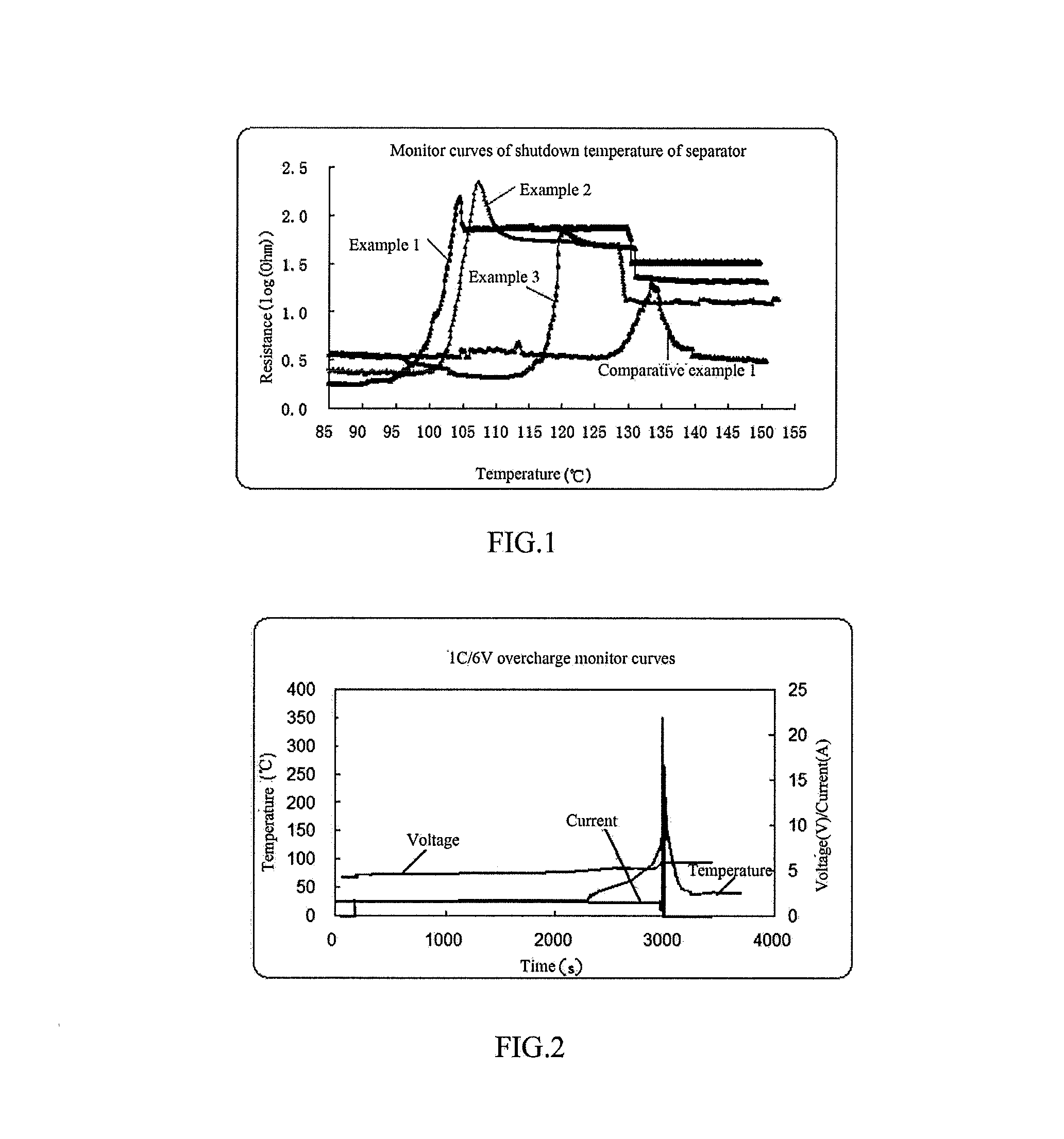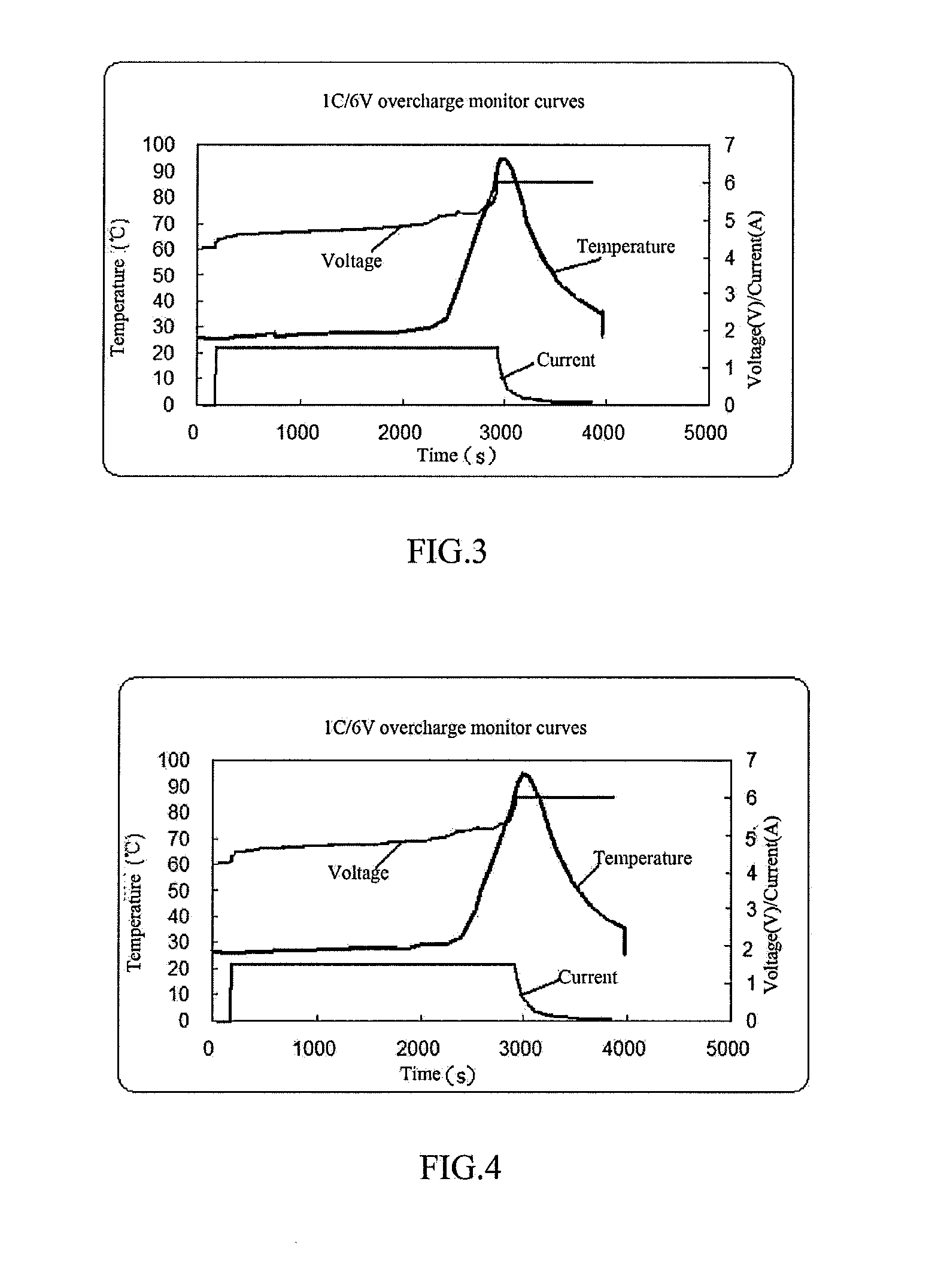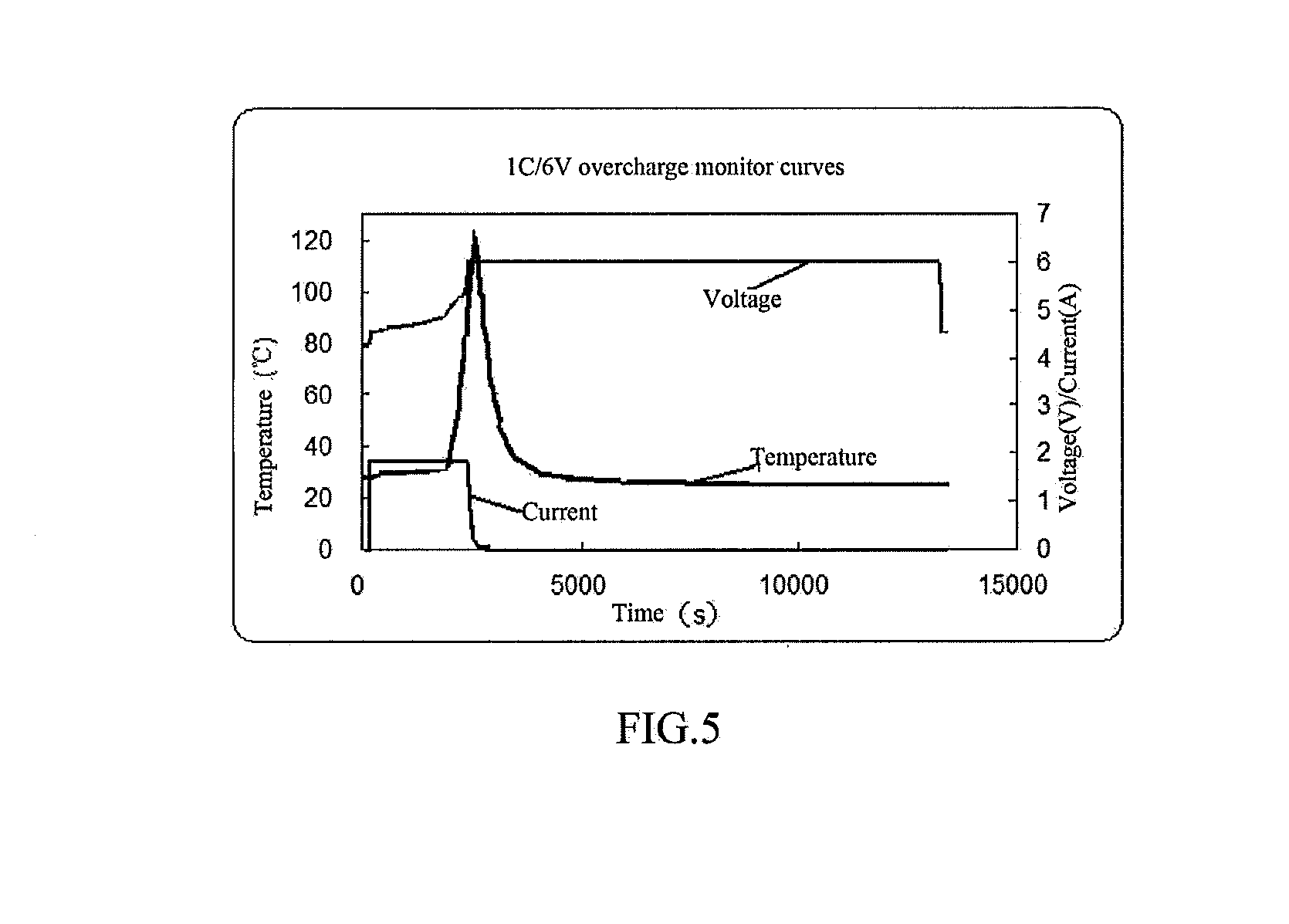Separator of lithium-ion-battery preparation and method thereof
a lithium-ion battery and separation method technology, applied in the direction of secondary cell servicing/maintenance, cell components, cell component details, etc., can solve the problems of increasing the safety problem of lithium-ion batteries, the safety performance of single-layer polyethylene separators and single-layer polypropylene separators is worse, and the polyethylene layer shutdown cannot effectively function as a safety protection, so as to ensure the safety performance of lithium-ion batteries, reduce the shrinkage of the substra
- Summary
- Abstract
- Description
- Claims
- Application Information
AI Technical Summary
Benefits of technology
Problems solved by technology
Method used
Image
Examples
example 1
[0031]A separator of a lithium-ion battery provided in this example comprised a substrate membrane and a coating provided on a surface of the substrate membrane, the coating comprised 55 wt % of ceramic particles, 25 wt % of a solid polymer wax, 13 wt % of an adhesive and 7 wt % of a water-soluble polymer thickening agent. The substrate membrane was polyethylene membrane with a thickness of 16 μm, the ceramic particles were aluminum oxide particles with an average particle diameter of 1,000 nm, the adhesive was styrene-acrylic latex, the water-soluble polymer thickening agent was sodium carboxymethyl cellulose; the solid polymer wax was polyethylene wax with a melting point of 100° C., a molecular weight of 10,000 and a particle size of 1 μm, and the particle size of the solid polymer wax was larger than the pore size of the substrate membrane. A thickness of the coating was 1 μm.
example 2
[0032]A separator of a lithium-ion battery provided in this example comprised a substrate membrane and a coating provided on a surface of the substrate membrane, the coating comprised 45 wt % of ceramic particles, 35 wt % of a solid polymer wax, 10 wt % of an adhesive and 10 wt % of a water-soluble polymer thickening agent. The substrate membrane was polypropylene membrane with a thickness of 12 μm, the ceramic particles were zirconium oxide particles with an average particle diameter of 2,000 nm, the adhesive was pure acrylic latex, the water-soluble polymer thickening agent was carboxymethyl cellulose; the solid polymer wax was polypropylene wax with a melting point of 110° C., a molecular weight of 20,000 and a particle size of 5 μm, and the particle size of the solid polymer wax was larger than the pore size of the substrate membrane. A thickness of the coating was 5 μm.
example 3
[0033]A separator of a lithium-ion battery provided in this example comprised a substrate membrane and a coating provided on a surface of the substrate membrane, the coating comprised 25 wt % of ceramic particles, 45 wt % of a solid polymer wax, 18 wt % of an adhesive and 12 wt % of a water-soluble polymer thickening agent. The substrate membrane was polypropylene / polyethylene / polypropylene composite membrane with a thickness of 20 μm, the ceramic particles were titanium oxide particles with an average particle diameter of 700 nm, the adhesive was styrene-butadiene rubber latex, the water-soluble polymer thickening agent was polyacrylamide; the solid polymer wax was polyethylene oxide wax with a melting point of 85° C., a molecular weight of 1,000 and a particle size of 0.5 μm, and the particle size of the solid polymer wax was larger than the pore size of the substrate membrane. A thickness of the coating was 8 μm.
PUM
| Property | Measurement | Unit |
|---|---|---|
| thickness | aaaaa | aaaaa |
| particle diameter | aaaaa | aaaaa |
| particle diameters | aaaaa | aaaaa |
Abstract
Description
Claims
Application Information
 Login to View More
Login to View More - R&D
- Intellectual Property
- Life Sciences
- Materials
- Tech Scout
- Unparalleled Data Quality
- Higher Quality Content
- 60% Fewer Hallucinations
Browse by: Latest US Patents, China's latest patents, Technical Efficacy Thesaurus, Application Domain, Technology Topic, Popular Technical Reports.
© 2025 PatSnap. All rights reserved.Legal|Privacy policy|Modern Slavery Act Transparency Statement|Sitemap|About US| Contact US: help@patsnap.com



